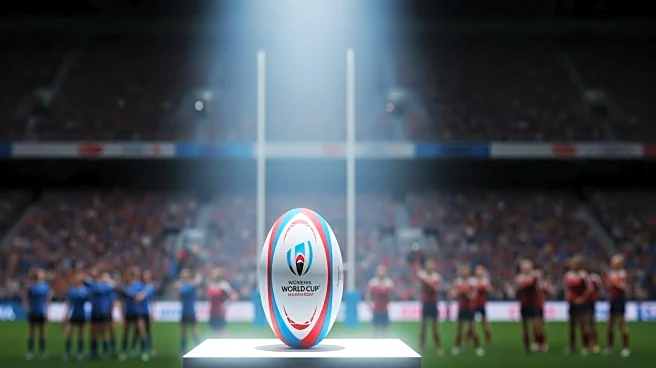What's Happening?
Emily Scarratt, a prominent figure in women's rugby, has announced her retirement following a successful career that spanned from amateurism to professionalism. Scarratt's career highlights include 119 Test caps, two World Cup titles, and 11 Six Nations
winners' medals. Her retirement comes after the 2025 Women's Rugby World Cup, which saw a record attendance of 81,885 for the final match between England and Canada. This marked a significant increase from the 13,000 spectators at the 2010 final. The growth in women's rugby is evident, with the opening fixture of the 2025 World Cup drawing nearly 43,000 attendees, compared to just 2,500 in 2010.
Why It's Important?
The growth of women's rugby, as highlighted by the increased attendance and interest in the 2025 World Cup, signifies a broader acceptance and support for women's sports. This shift not only provides more opportunities for female athletes but also challenges traditional gender roles in sports. The increased visibility and support can lead to more sponsorships, better training facilities, and professional opportunities for women in rugby. Scarratt's career, which transitioned from amateur to professional, exemplifies the potential for women's sports to evolve and gain recognition on a global scale.
What's Next?
With the momentum gained from the 2025 World Cup, stakeholders in women's rugby are likely to push for further development and investment in the sport. This could include more international fixtures, increased media coverage, and enhanced grassroots programs to nurture future talent. The success of the World Cup may also inspire other sports to invest in women's leagues and competitions, further promoting gender equality in sports.
Beyond the Headlines
The rise of women's rugby also raises questions about the sustainability of this growth and the need for continued support from governing bodies and sponsors. As the sport gains popularity, there may be challenges related to maintaining the integrity and inclusivity of the game. Additionally, the cultural impact of increased female participation in traditionally male-dominated sports could lead to broader societal changes in perceptions of gender roles.















